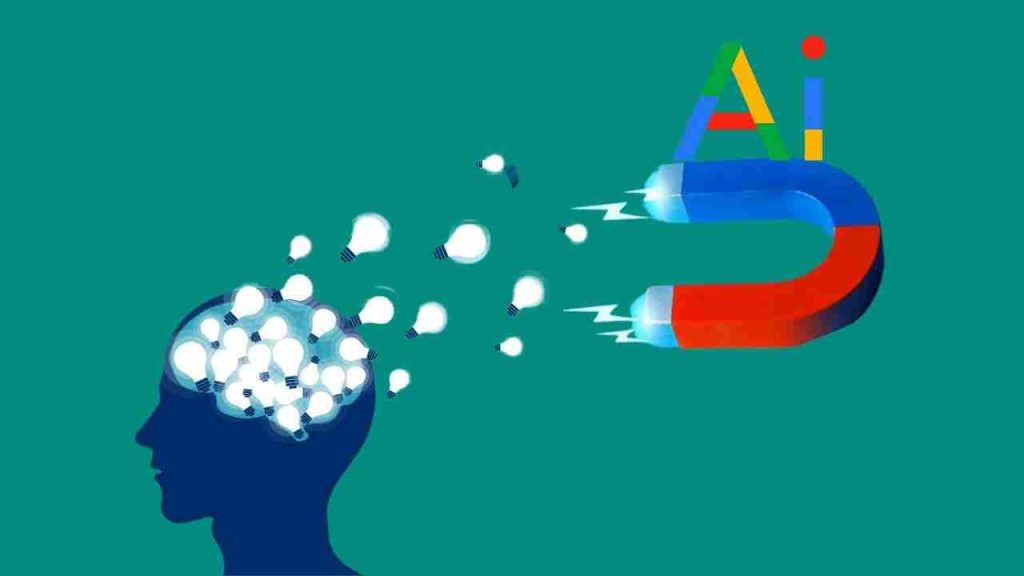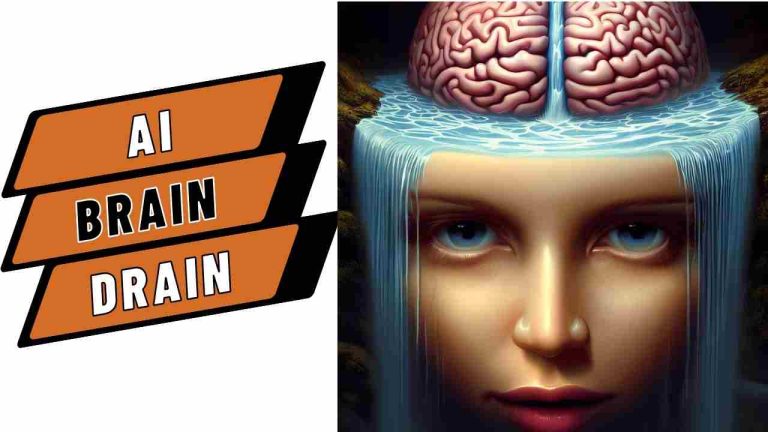Imagine this: you’re stuck on an essay about the French Revolution. Enter ChatGPT, the whiz-bang AI tool that whips up paragraphs in seconds. Sounds like a lifesaver, right? Well, hold on a sec, because while AI like ChatGPT can be super helpful, it can also turn into a bit of a brain drain.
The Good Stuff: AI as a Super Tutor
AI tools can be like those awesome tutors you see in movies. They can:
- Explain complex concepts: Got a knot in your head over physics? AI can break it down in clear, easy-to-understand language.
- Boost Brainstorming: Stuck for ideas? AI can throw out creative prompts to get your essay flowing.
- Practice Makes Perfect: Need to hone your writing skills? AI can grade your work and point out areas for improvement.
The Flip Side: The AI Shortcut
Think of AI as a double-edged sword. Here’s the not-so-great part:
- Lazy Learners: If you rely on AI for everything, your own brain muscles get flabby. You might not learn how to think critically or analyze information yourself.
- Fake It Till You Make It (But Never Do): AI can churn out impressive-sounding essays, but are they actually good? You might end up with a paper full of big words that you don’t even understand!
- Originality Out the Window: AI can’t replace your own unique voice and perspective. Overuse might make your writing sound generic and uninspired.
So, is AI a friend or foe for students?
The answer, like most things in life, is: it depends. AI can be a powerful tool, but it’s important to use it wisely. Here are some tips:
- Think of AI as a guide, not a refuge: Use it to understand concepts, not write your entire essay.
- Develop your own voice: Don’t let AI dictate your writing style.
- Focus on critical thinking: Don’t just accept information – analyze it, question it, and come to your own conclusions.
Why Generative AI Might Not Be the Best Fit for Young Minds: A Tech Explorer’s Analysis

Generative AI tools like ChatGPT are fantastic for churning out text, but when it comes to young minds, there’s a chance they might be doing more harm than good. Here’s a deep dive into how these tools can hinder brain development and why age restrictions might be a good idea:
Curbing Curiosity and Critical Thinking:
- Thinking on Autopilot: Imagine having all the answers at your fingertips. AI can be like a magic oracle, giving summaries and explanations without the struggle of exploration. This can stifle a child’s natural curiosity and hinder their ability to develop critical thinking skills. They might not learn how to ask questions, research information, and form their own conclusions.
- The Maze Without the Map: Learning is often about the journey, not just the destination. AI can provide pre-digested information, but it bypasses the process of grappling with concepts, making connections, and building a strong foundation of knowledge. This can leave children feeling lost when they encounter problems that AI can’t solve for them.
Strangling Individuality and Creativity:
- The Cookie-Cutter Mind: AI-generated text tends to follow a certain pattern. Overuse can lead children to write in a generic, formulaic way, stifling their unique voice and creativity.
- Where’s the Wow Factor? AI might churn out grammatically correct text, but it often lacks the spark of originality and personal expression. This can make children’s writing less engaging and interesting.
My Recommendation: Age Restrictions for a Healthy Balance
Just like we wouldn’t give a toddler a weightlifting set, there’s a reason why age restrictions exist. Here’s why I recommend limitations on AI exposure for young children:
- Brain Development Stages: Children’s brains are like sponges, soaking up information and forming neural connections at an incredible pace. During these crucial stages, it’s important to prioritize activities that encourage exploration, critical thinking, and independent learning. Unrestricted AI use might disrupt this natural development.
- Building a Strong Base: Before relying on AI for assistance, children need to develop a solid foundation in core skills like reading comprehension, critical analysis, and self-expression. These skills form the bedrock for future learning, and AI shouldn’t be a shortcut that bypasses them.
The Way Forward: A Responsible Approach to AI in Education
This isn’t to say AI has no place in education. But it needs to be used strategically and responsibly. Here are some ways to achieve a healthy balance:
- Focus on Activities that Foster Exploration: Let young children learn by doing, asking questions, and experimenting.
- Encourage Curiosity and Critical Thinking: Pose open-ended questions, encourage research, and guide children to analyze information and form their own conclusions.
- Embrace Creativity: Nurture a love for storytelling, creative writing, and activities that allow children to express themselves in unique ways.
AI in Education: A Balancing Act for Young Minds
This article explores the potential downsides of generative AI tools like ChatGPT for young learners. While AI can be a helpful guide, overuse can hinder the development of critical thinking, curiosity, and individual expression.
Key Concerns:
- Reduced Brain Activity: AI might discourage children from actively seeking information and forming their own conclusions.
- Stifled Creativity: Overreliance on AI-generated text can lead to formulaic writing and a lack of originality.
Recommendations for Educational Leaders:
- Age Restrictions: Consider implementing age limitations on exposure to generative AI tools, allowing young minds to prioritize foundational learning skills.
- Activities for Exploration: Foster a learning environment that encourages children to ask questions, experiment, and engage in creative problem-solving.
- Critical Thinking is King: Integrate activities that develop critical analysis skills, such as research projects and open-ended discussions.
- Embrace Individuality: Nurture creative expression through activities like storytelling, creative writing, and projects that allow students to showcase their unique voice.
The Takeaway:
AI can be a valuable asset in education, but it shouldn’t replace the irreplaceable value of independent learning and creative exploration. By prioritizing activities that develop critical thinking and self-expression, educators can empower young minds to thrive in the age of AI.
Tech Trailblazers
Readmore : Stepping into Infinity: Disney’s HoloTile Redefines Virtual Movement | Milk Made Without Cows: Can Technology Revolutionize the Dairy Industry? | World Leaders Warn of AI’s Potential for “Catastrophic Harm,” But India Remains Cautious on Regulation

